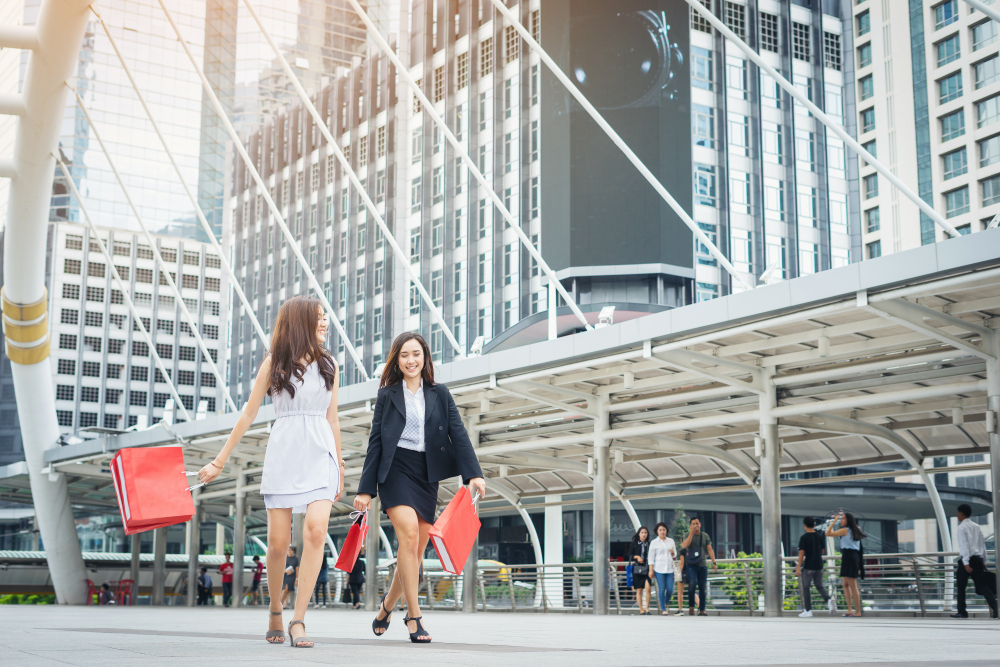Breathing Life into Cities with Retail Placemaking
- November 29, 2023
- 3 min

Welcome to our exploration of retail placemaking, a concept revolutionizing urban spaces around the globe. This isn’t just about building shops; it’s about creating vibrant, inviting, and dynamic areas where communities thrive. Retail placemaking goes beyond mere commerce, weaving together the fabric of neighborhoods and fostering a sense of belonging. It’s about transforming spaces into places where people don’t just shop – they connect, experience, and engage. Join us as we delve into how this innovative approach is reshaping cities, bringing new energy and life to once-forgotten corners.
Understanding Retail Placemaking
Retail placemaking is an approach that combines urban planning, design, and retail strategy. It focuses on creating spaces that are not only commercially viable but also socially and culturally enriching. This concept emphasizes the importance of retail environments in enhancing the quality of life for local communities. It’s about turning shopping areas into hubs of social interaction, cultural expression, and community engagement.
The Role of Design
Design plays a crucial role in retail placemaking. It’s not just about aesthetics; it’s about functionality, accessibility, and creating an atmosphere that invites people in. The design includes the layout of spaces, the mix of shops and services, and the integration of public areas like parks and plazas. Good design fosters a sense of safety, comfort, and enjoyment, encouraging people to spend time in these spaces.
Community Involvement: A Key Ingredient
Retail placemaking thrives on community involvement. It’s essential to understand the needs, desires, and characteristics of the local population. Engaging with community members ensures that the developed spaces reflect their identity and values. This collaborative approach leads to a sense of ownership and pride among locals, making the space more than just a shopping destination.
Transforming Spaces Into Destinations
A crucial aspect of retail placemaking is transforming ordinary spaces into destinations. This involves more than just placing stores; it’s about creating experiences. These can include cultural events, outdoor markets, art installations, and areas for performances. Such features attract not just locals but also tourists, making the area a dynamic and diverse place to visit.
Case Studies: Success Stories of Retail Placemaking
Across the world, there are numerous examples of successful retail placemaking. These case studies highlight how once-dull areas have been revitalized into bustling hubs of activity. From the rejuvenation of historic districts to the creation of new urban centers, these examples showcase the power of thoughtful planning and community engagement. For more details visit us at https://www.philmyrick.com/.
The Economic Impact
The economic benefits of retail placemaking are significant. By attracting visitors and encouraging local spending, these spaces boost the local economy. They also increase property values and can lead to job creation. Retail placemaking can be a catalyst for broader economic growth in urban areas.
Sustainability and Retail Placemaking
In today’s world, sustainability is a critical factor in any urban development project. Retail placemaking projects are increasingly incorporating green spaces, sustainable materials, and energy-efficient designs. These elements not only contribute to the environmental health of the area but also appeal to environmentally conscious consumers.
Challenges and Considerations
While retail placemaking has numerous benefits, it also comes with challenges. Balancing commercial interests with community needs, managing the cost of development, and ensuring long-term sustainability are some of the issues that need careful consideration. It’s essential to approach these projects with flexibility and a willingness to adapt to changing circumstances.
Looking to the Future
The future of retail placemaking is bright. As we move forward, we can expect to see more innovative approaches, blending technology, art, and culture to create even more engaging urban spaces. The focus will likely shift towards more inclusive and sustainable practices, ensuring that these developments benefit everyone.
Conclusion
Retail placemaking is more than just a trend; it’s a movement toward creating more lively, inclusive, and engaging urban areas. By focusing on the needs of communities and the possibilities of spaces, we can transform the urban experience. It’s a reminder that at the heart of every city are the people who live, work, and play there. Honoring that spirit and building spaces that reflect and enrich the lives of those people.
As we’ve seen, retail placemaking blends commerce, community, and creativity. It’s about transforming spaces into places where life happens, where memories are made, and where communities grow stronger. The future of urban spaces looks brighter than ever with retail placemaking leading the way.
About Phil Myrick
Phil Myrick is an advisor to planning and development projects around the world and former CEO of Project for Public Spaces. Phil applies research into how people interact with their environments and each other to create vibrant places, destinations, districts, and developments. His strategic advice has helped his clients achieve their goals of attracting people, engaging people in their community, strengthening connections and social fabric, and stimulating economic development. Phil is married with two teenagers and struggles to satisfy his passion for being outdoors or on the water. https://philmyrick.com

